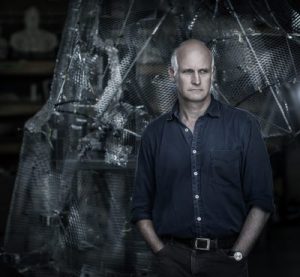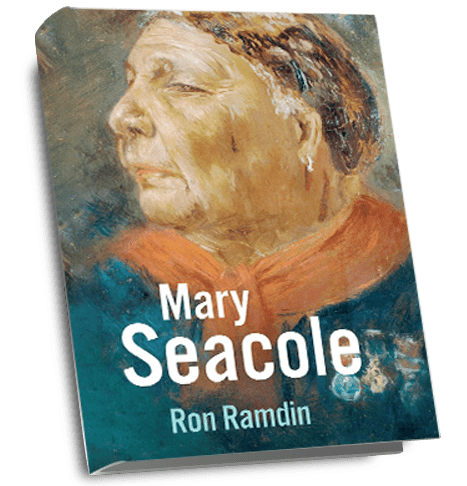On 30 June 2016, a memorial statue of Mary Seacole was unveiled by Baroness Floella Benjamin OBE in the gardens of St Thomas’s Hospital; the UK’s first in honour of a named black woman.

The unveiling followed a 12 year campaign for funding by the Mary Seacole Memorial Statue Appeal, raising over half a million pounds with much coming through small donations from schools, nurses and army units, emphasising the popularity of the appeal across a wide spectrum of British society. In November 2015, the Chancellor of the Exchequer announced the donation of £240,000 of LIBOR banking fines to pay for the installation.
The artist – Martin Jennings
The statue was conceived and produced by Martin Jennings FRBS. His celebrated body of work includes larger than life-size figures of the poets Sir John Betjeman in St Pancras Station and Philip Larkin in Hull – highly acclaimed works that are testimony to his career as a world-renowned artist.
Martin Jennings writes:
“…The sculpture represents her marching defiantly forward into an oncoming wind, as if confronting head-on some of the personal resistance she had constantly to battle…”
Mary Seacole was an intrepid, determined, dynamic figure, always on the go, either physically in terms of endless journeying locally or between continents, or intellectually in terms of her efforts to find remedies for the sick. The sculpture represents her marching defiantly forward into an oncoming wind, as if confronting head-on some of the personal resistance she had constantly to battle. She carries her bag of medications and poultices towards the scene of battle. Though she would normally have worn a bonnet or straw hat and liked to sport ribbons and bright colours, these have been pared away to leave her marching bareheaded into the fray.
Behind the figure of Mary stands a vertical bronze disc, cast from an image of the earth on or near the site where she established the British Hotel in the Crimea. The disc performs both practical and symbolic functions.
The disc works symbolically in a number of ways. Not only does its startling verticality and comparative blankness communicate to the viewer that this is clearly a sculpture from our own time rather than a mere pastiche of 19th century statuary, it also works to put Mary Seacole in the context of her time and place. Her autobiography communicates a powerful sense of place, whether in the Panamanian jungle or the fly-blown heat of the Crimean summer. Literally I wish to bring that place to viewers of the sculpture. The disc can also be seen as a model of the earth, over whose surface she constantly travelled, during a period when pioneering travel was in the ascendancy. As a tiny fragment of a foreign land it also hints at the pathetic nature of the dusty scraps of earth over which, in an imperialist age, so much blood was spilt.
The disc points up the essential emotional narrative of Mary Seacole’s life. In a key passage in her autobiography she describes waiting in the hallway of the Secretary at War to be accepted as an official member of the nursing team being sent to the Crimea. When she realises that she has been stonewalled solely on account of her ethnic origin, she communicates a personal pain that can be shared by anyone who has ever been rejected merely for who they are rather than for any lack of merit. This stonewalling, which is at the heart of the racial intolerance experienced by Mary Seacole 150 years ago and indeed of all racial intolerance, is something which finds physical form in the monument. Confronting a stone wall, Mary turns her back and marches defiantly towards her destiny and into history.
Both the figure and the disc are cast in bronze. The disc is patinated a paler colour than the figure in order to enhance the shadow thrown by the illumination of the figure. The plinth is of Cumbrian black slate bordered by Portland stone around its edge. The full height of the monument, including its plinth, is 4.9m. The figure of Mary weights 1.5 tons and the disc over 5 tons. The casting was produced by Pangolin Editions of Gloucestershire.



